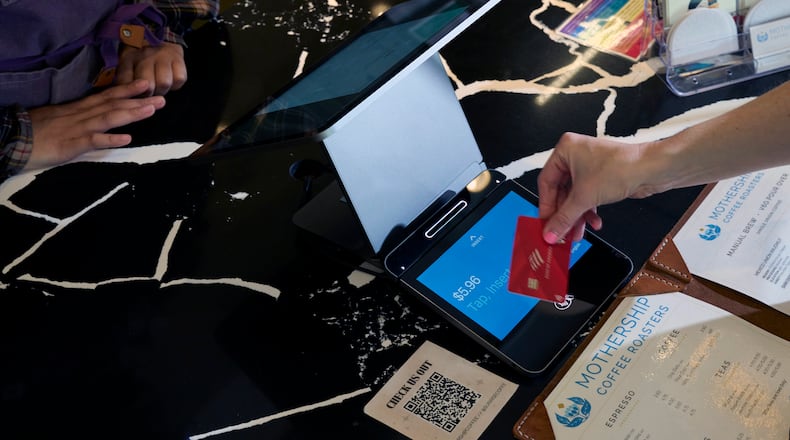Stephanie Moulton, professor of public policy and the associate dean for faculty and research at the John Glenn College of Public Affairs at Ohio State, said these trends are concerning.
“That’s a sign that people are starting to feel a bit of a pinch,” she said. “They haven’t gone delinquent yet but they aren’t paying that balance off and they’re only making a minimum payment.”
Minimum payments
Some financial services companies recommend paying with credit cards whenever possible because they have good fraud protections, provide rewards and help build credit.
But experts say consumers should pay off their balances as quickly as they can because credit cards tend to be a very expensive form of borrowing, with average interest rates recently hovering around 24%.
Credit: AP
Credit: AP
A report published this month by the Federal Reserve Bank of Philadelphia found that the share of active credit card accounts making just the minimum payment is at the highest level on record (10.8% of accounts). The data series dates back to 2012.
Some surveys have estimated that roughly one in six to four in 10 credit card holders only pay the minimum amount. The Federal Reserve’s estimates and surveys by financial services companies sometimes measure different things.
Credit card companies often have minimum payment requirements that are about 1% to 3% of the value of the total outstanding balance.
But paying the minimum amount can be very costly and keep people in debt for a very long time.
Bankrate says that more than half of U.S. cardholders with credit card debt (53%) have shouldered credit card debt for at least a year.
A long time in debt
LendingTree says the average credit card balance in Ohio was about $6,300 in the third quarter of last year.
The company said that the average minimum monthly credit card payment in the state was about $154 in early 2024.
Credit: NYT
Credit: NYT
Experian says that a consumer with a balance of $6,500 who makes a minimum payment of around $118 on a card with a 20% APR would be charged more than $1,000 in interest over the course of 12 months and still barely reduce the balance.
A February 2024 study by Bankrate found that an Ohio household with an average annual income of about $90,100 would need 17 months to pay off a balance of $5,400 if they dedicated 5% of their monthly income to credit card debt service.
The only way to avoid carrying a balance on a credit card is to pay the card off in full every month. For some people this is not possible. But experts say card holders should pay as much as they can every month — and ideally this would be more than the minimum amount.
Experian says consumers who have cards with high interest rates should consider transferring their account balances to a card with an introductory 0% APR or reduced interest rate.
Credit card interest is usually compounded, meaning that any interest owed becomes part of the principal balance.
Consumers are encouraged to prioritize paying off their credit cards that have the the highest balances and the highest interest rates first.
About the Author



